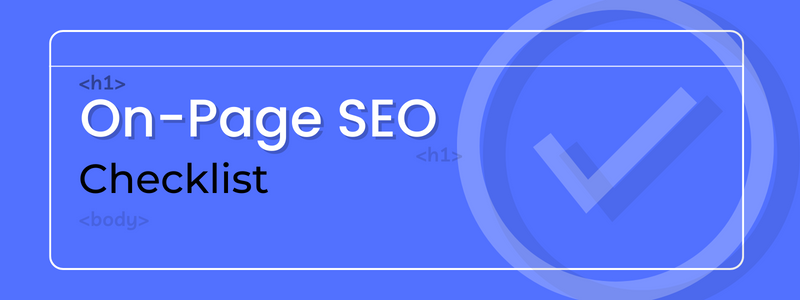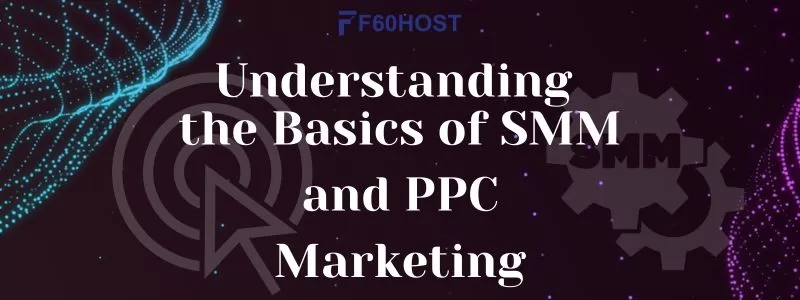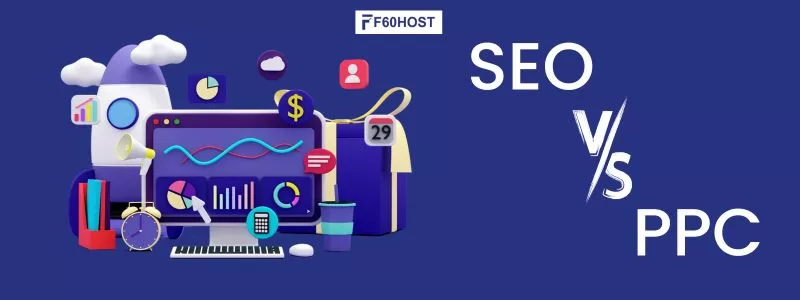On-Page SEO Checklist: How to Optimize your Website

On-page SEO (search engine optimization) is the process of tweaking individual web pages to enhance user experience and rankings.
Looking for a comprehensive On-Page SEO checklist to assist you to improve the organic traffic to and Google ranking of your website? Look nowhere else.
The final checklist we’ve created includes best practices and tasks you must be aware of in order to generate SEO success.
Use this as your go-to resource for everything from the fundamentals of SEO to things you must know when assessing your off-page signals.
What Is On-Page SEO?
This is the opposite of off-page SEO, which refers to optimizing for elements outside of your site. Backlinks and social media mentions are examples of this.
Elements of on-page SEO include:
- Title tags
- Internal links
- HTML code
- URL optimization
- On-page content
- Images
- User experience (UX)
Why Is On-Page SEO Important?
Google’s algorithm is updated on a regular basis, improving its ability to understand both user intent and overall user experience once a user arrives on a page. That is why it is critical to learn SEO and stay current with best practices. Furthermore, Google prioritizes user experience, so it’s critical to include on-page SEO practices in your overall strategy.
A well-optimized page also assists Google in understanding the content, which allows it to organize and rank your page. Essentially, you are assisting Google in doing its job better.
“The most basic signal that information is relevant is when content contains the same keywords as your search query,” according to Google.
On-Page SEO Content Optimization
On-page optimization focuses on SEO tactics that you have control over (in other words: on your site). This is why the terms “on-page SEO” and “on-site SEO” are sometimes used interchangeably.
To create the type of content and site that ranks well in search engine results pages (SERPs) and leads to higher conversion rates, you’ll need to understand several critical components of a comprehensive on-page SEO strategy. We’ll get to those factors later.
Analyzing your site with the On-Page SEO Checker is a good place to start. This tool will provide you with optimization ideas for a variety of on-page SEO categories.
Prioritize Opportunities for Outbound and Internal Linking
Including related outbound (or external) links in your content inform Google about the topic of your page.
You also don’t want to overlook internal links.
Linking from authoritative, high-performing content on your site can help boost other pages. Internal (or inbound) links also make it easier for Google bots to crawl your site.
Make sure that every page on your website is linked to at least one (or a few) other pages. Otherwise, the page will be considered orphaned.
Related: Black Hat SEO and White Hat SEO
URLs should be optimized.
Your website’s URL structure also provides important SEO benefits. When you create a URL that includes important keywords, it becomes clearer what topic this particular page will cover.
Based on the URL, both search engines and users should be able to easily determine the topic of a page.
However, make sure your URLs are concise and to the point. Keep it short and avoid using stop words.
Schema Markup
Schema markup functions as a digital road map for Google bots and is possibly the most technical aspect of advanced on-page SEO we will cover in this article.
As previously stated, Google employs automated bots to crawl, index, and render your web content. Google uses a simple technical language called schema markup to understand what your site is about and how your web pages are related.
Structured data is another name for this coding vocabulary. When schema markup is used, it indicates that the content is about:
- Events
- Products
- People
- Local businesses
- Organizations
- Reviews
- Recipes
- Medical conditions
- And more
Add and Optimize Images
The reality is that users are unlikely to engage with a long wall of text. Images come into play here.
The more useful your images are, the more likely users will engage with them.
Concentrate on including images that enhance your content. You get extra points if you create your own graphics to share on social media.
Your images should also be optimized. That is to say:
- Using strategies such as file size reduction and lazy loading to ensure they load quickly.
- Create descriptive alt tags that tell the search engine what the image is so that Google recognizes it as a valuable piece of content on your site. The alt text also helps visually impaired visitors to the site, allowing them to fully appreciate your content.
- Choosing image titles and file names that reflect the image and keywords you want to incorporate into the content.
Final Thoughts: On-Page SEO
Now that you have a better understanding of on-page SEO signals, make sure to keep them in mind when creating new pages.
You can also find plenty of on-page optimization ideas for potential quick wins by using the On-Page SEO Checker.
However, the most important aspect of any SEO strategy is patience. Great results require time, effort, and some trial and error.
Visit our F60 Host to know about the Core Elements of SEO: On-Page SEO and Off-Page SEO. The off-page SEO checklist will be out soon stay tuned.
Source: Semrush Blogs



